Spring is a season of expansion as we stretch out of hibernation and head back into the activity that warmer temperatures bring. This is mirrored by the trees and flowers with unfurling leaves and bright blossoms. Some of us feel moved to cleanse our spaces of cobwebs and clutter that have accumulated over the winter months. It feels good to open our windows and let the fresh air in and allow any stagnancy to move out. This energy is also what moves many to want to give their bodies a “spring cleanse.” This is where the wild green plants step in to assist us in gently encouraging our liver and other organs of detoxification to do their thing, and we are just offering support by eating the way our ancestors did. The world around has changed, but the wild green plants offer their medicine as they always have.
Many of the plants that can be harvested at this time have the dominant flavor of bitter, a flavor known for stimulating digestion. Others, like sorrel, taste sour and help the gallbladder to release bile while facilitating the uptake of minerals from our food. Then there is the delicious spiciness inherent in onion grass and the roots of garlic mustard. In a culture that loves sweetness, these wild plants display flavor profiles that our bodies are craving in order to be at optimal health. My version of the “spring cleanse” is to sleep well, drink lots of water with lemon, and gradually add spring greens, both wild and cultivated into our daily eating. These are to be balanced with healthy fats and proteins and as many colorful fruits and vegetables as possible. For those who feel a fast is necessary, please do so with caution, keeping in mind that if you stop eating at 7 pm and don’t eat again until breakfast you are fasting for half of your day. Most importantly, every body is unique and benefits from different things. Know your body and be gentle with it. Reach out for support from healthcare practitioners when more insight might be necessary.
Now for some of the stars of the spring greens show:
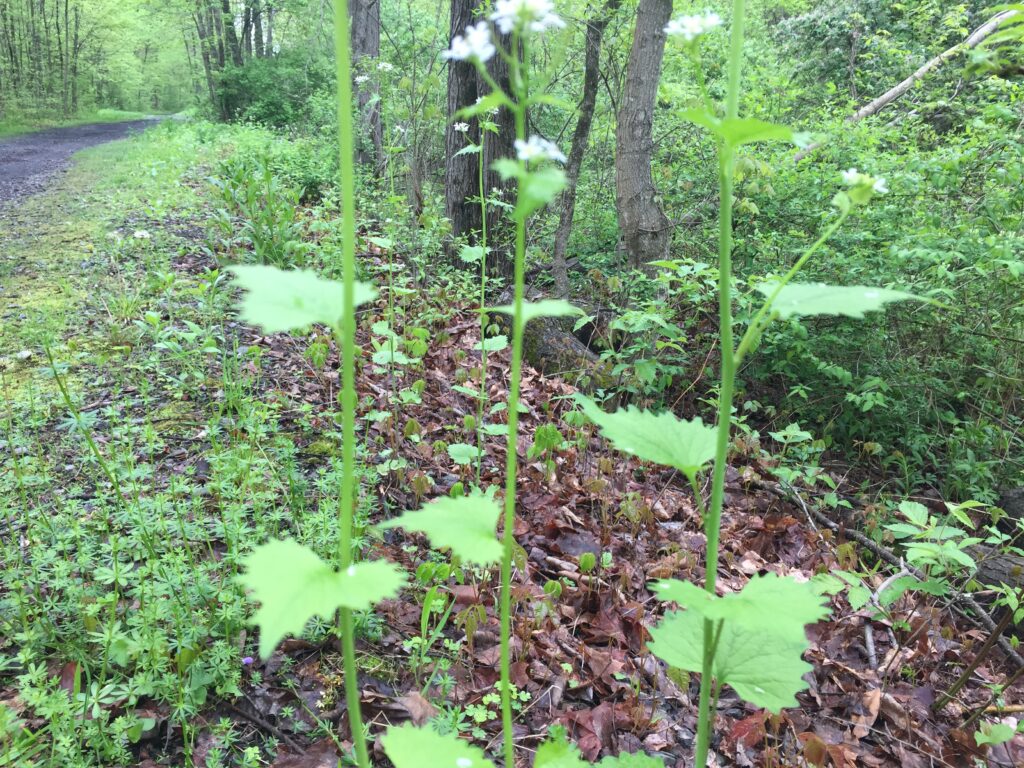
Garlic Mustard (Alliaria petiolate) Bitter & Spicy: You can tell a mustard family plant by its four petaled flowers. Garlic mustard begins the season with lobed leaves and by the time the nights get warm, the flowers look more toothed. Their flowers are clusters of small white blossoms. If you don’t want these plants to spread (which they do readily) pick the flowers so they don’t go to seed. The whole plant is edible, with the root exhibiting the distinct flavor of horseradish.

Dandelion (Taraxacum official) Bitter: You’ll find a variation in the leaves of dandelion dependent on where it is growing. They tend to be more toothed in areas where the ground is not as fertile and moist. The leaves are more lobed and juicier when allowed to grow in rich soil. I pick from my garden to add to my cooking. It is always hard for me to weed a garden bed for planting and pull out the dandelions that have volunteered there because these “weeds” that make good medicine and food. My weeding becomes a foraging activity as I set aside dandelion roots for tincture, tea and vinegar, and the leaves for salad. Dandelion’s roots have moving and building properties, helping to maintain steady iron levels in the blood. The stems are bitter and can be eaten as part of a spring cleanse, or used as whistles, as my daughter just taught me. The flower petals are wonderful thrown into pancakes, soup, salad or dip.
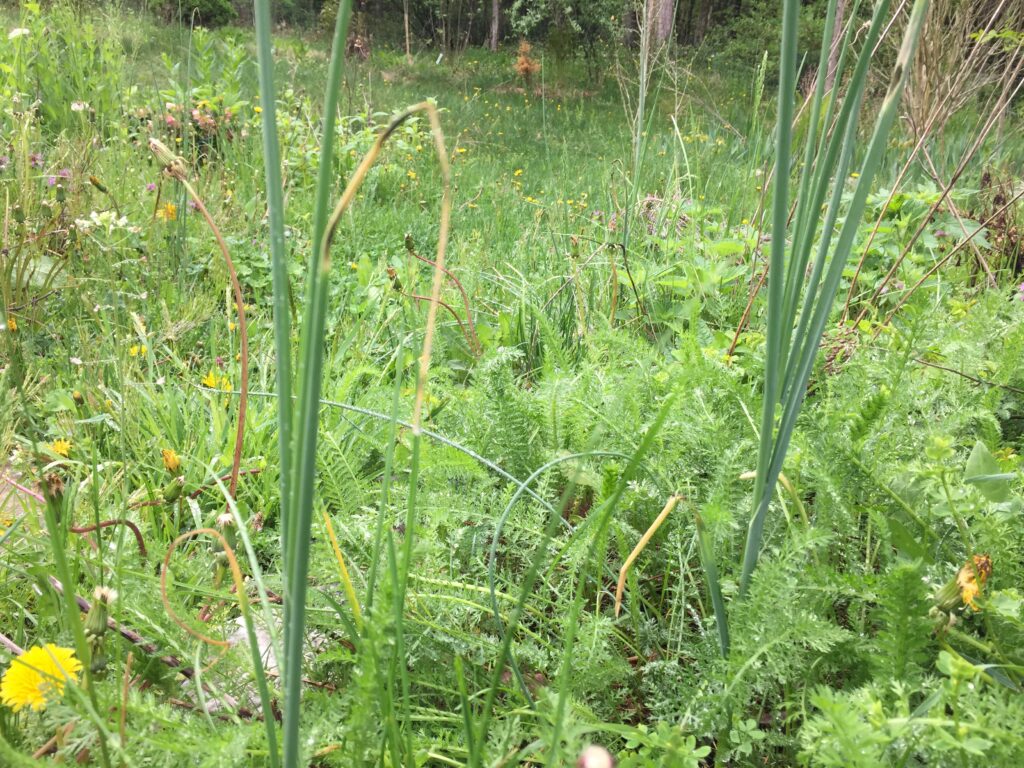
Onion Grass or Field Garlic (Allium vineale) Spicy: This is the spiky plant that sprouts out of lawns and the edges of woods, the fatter ones resembling scallions. When you dig them up you’ll find a small white bulb. They grow abundantly and can be pulled up by the root if you enjoy the taste of them. I like to keep some inside during their season, either in the fridge or a vase of water. They are delicious in pretty much everything I cook, but I tend to be a garlic lover, so that is no surprise. Onion grass is definitely my go-to base for sautes and stir-frys, as well as on top of avocado toast or cooked into a frittata. This was one of the first plants that my kids foraged, coming out of the woods with tell tale spicy, onion breath.
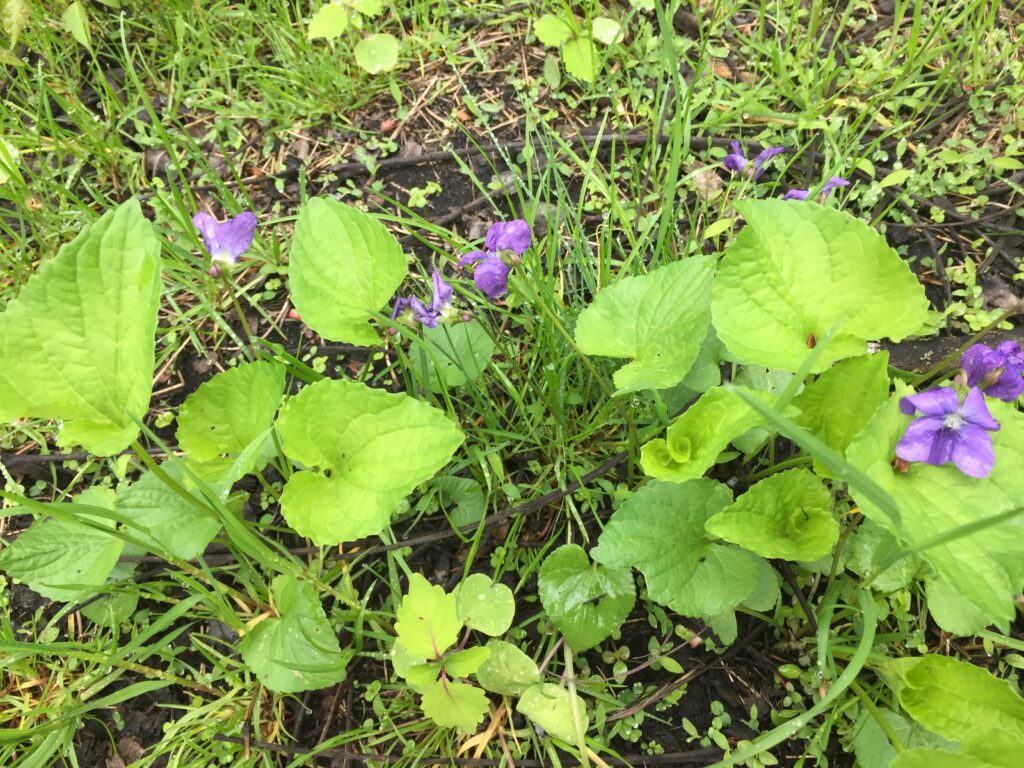
Violets (Viola sororia) Sweet and Moistening: Violet leaves are one of the juiciest plants you’ll be able to readily harvest in the spring. The leaves are heart shaped and smooth around the edges. They are full of vitamins and beta carotene and can help cool hot, dry situations in the body. They are most happy growing in shady areas and often along streams. I eat the blossoms of the purple violets as well. For me, no salad is complete without blossoms once the violets have bloomed. Violets are fairy medicine, which makes them magical for children. When harvesting violets it is best to have as many small handed helpers as possible. Rest assured knowing that the purple flower that is harvested is not actually the reproductive flower of the violet. The reproductive flower is dark green, grows beneath the leaves, and will come out in late summer. If you haven’t made yourself a salad with violet leaves and flowers yet, then do it soon!
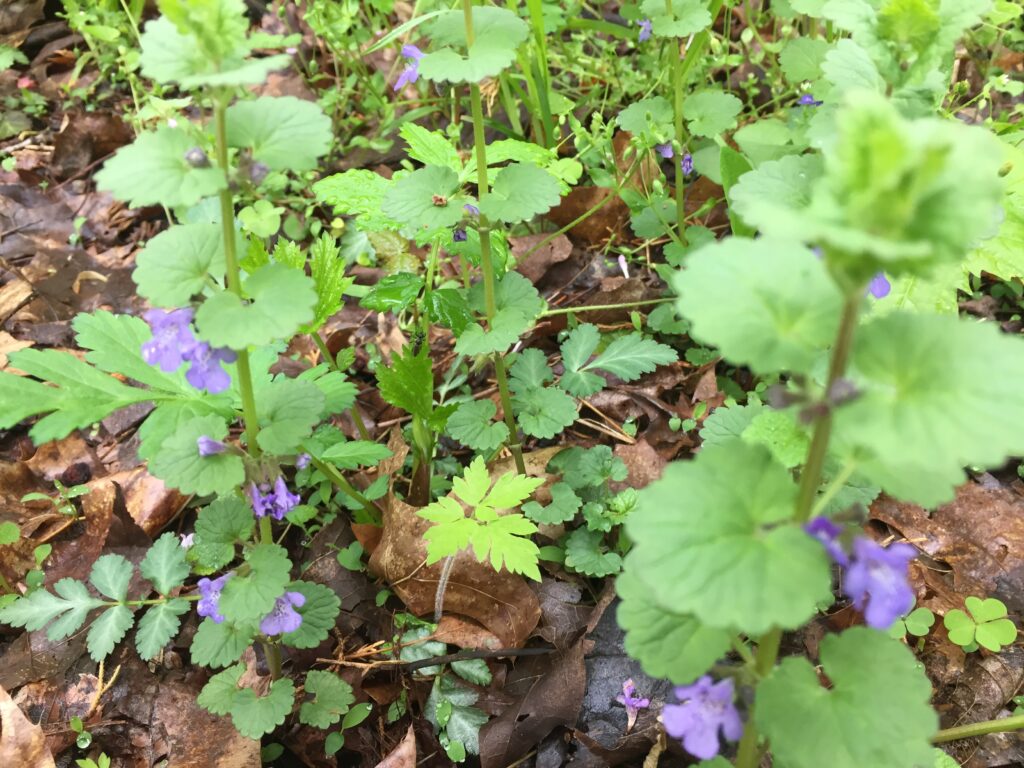
Ground Ivy (Glechoma hederacea) Bitter: This is a small plant, part of the very large mint family. This is apparent from its opposite growing leaves (across from each other on either side of the stem) and irregular flowers. My favorite use of ground ivy is to pick its stem, leaves and flowers and chop them up and pour honey over them. This sits until fall when I’ll warm it in a hot water bath and strain it. This is the perfect antidote to move out a stuck, phlegmy cough. Ground ivy can be added to soup and salad in small amounts, depending on your comfort with the flavor. Ground ivy has many names, including Creeping Charlie and Gill Over the Ground. Great names but also a good reminder for us to know our botanical names, as well as the common names.
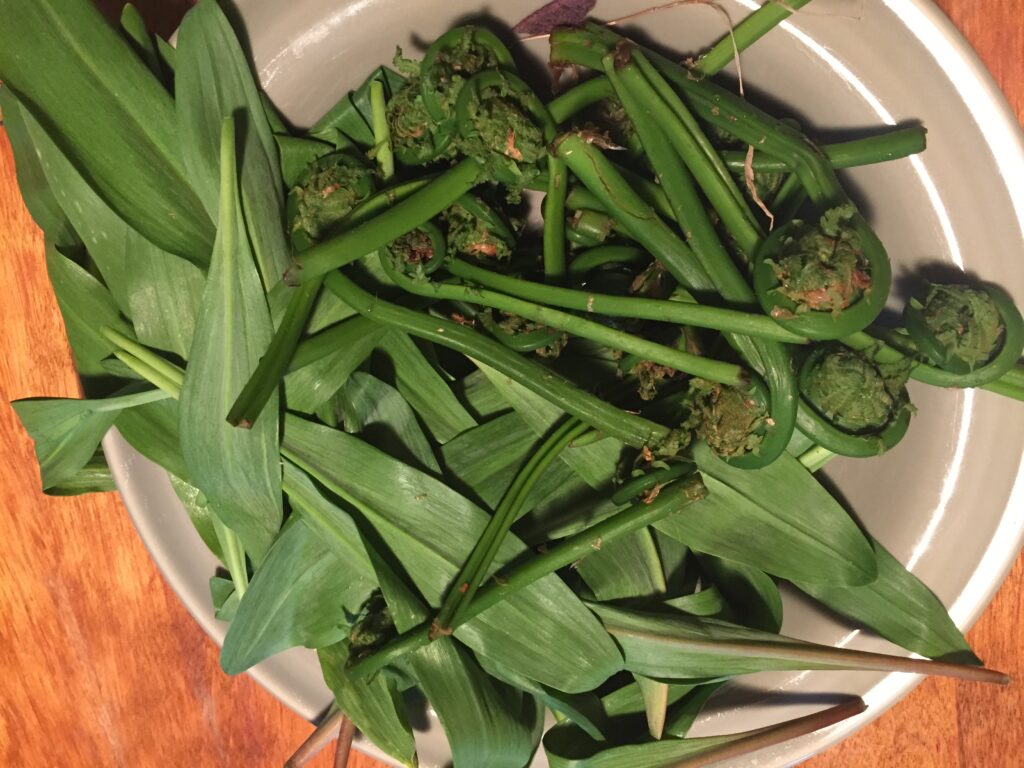
Ramps (Allium tricoccum) Spicy: Ramps are a treasure. These are slow growing plants that reproduce over seven years. They are currently being over harvested due to their delicious flavor and the trends in restaurants for more foraged foods. We can help to make sure that they don’t become endangered by only eating the green ramp tops, which are exquisite tasting. It is important to ask shop and restaurant owners if the ramps they are selling are being grown or foraged sustainably. The ramps I’ve been eating this year were gifted to me by a friend who has some growing on her land. She only takes a few tops from each patch. Their leaves are large and very juicy and have a flavor that is complex and delicious. I like to add ramps to my pesto, eggs, and even pizza. They are a rare treat that I savor as a delicacy in the years that I do get to enjoy them.

Some ways to eat these greens range from simple to more involved: salads, spring rolls, pesto, soup, goat chevre with greens chopped and mixed in, omelets, sautes and stir frys. We’ve even added ours to burritos and pizza this week. Th possibilities are endless! Make sure to know your plants and only eat those you are sure are edible. It’s important to be aware of look alikes. Also be mindful of where the plants are growing, away from roadsides and areas where domestic animals go to the bathroom. Most importantly, as foraging becomes more and more widespread please be sure to know the growing habits of the plants you gather and harvest them sustainably. Besides ramps, all the other plants mentioned are abundant and widespread. Eat your weeds with vigor and be aware of the plants that are at risk.
Resources
Foraging and Feasting: A Field Guide & Wild Food Cookbook by Dina Falconi & illustrated by Wendy Hollender
Newcomb’s Wildflower Guide by Lawrence Newcomb
Recipes from the Herbalist’s Kitchen: Delicious, Nourishing Food for Lifelong Health and Well-Being by Brittany Wood Nickerson
United Plant Savers (A wonderful organization to join and support) You can check for “at-risk” plants here United Plant Savers
